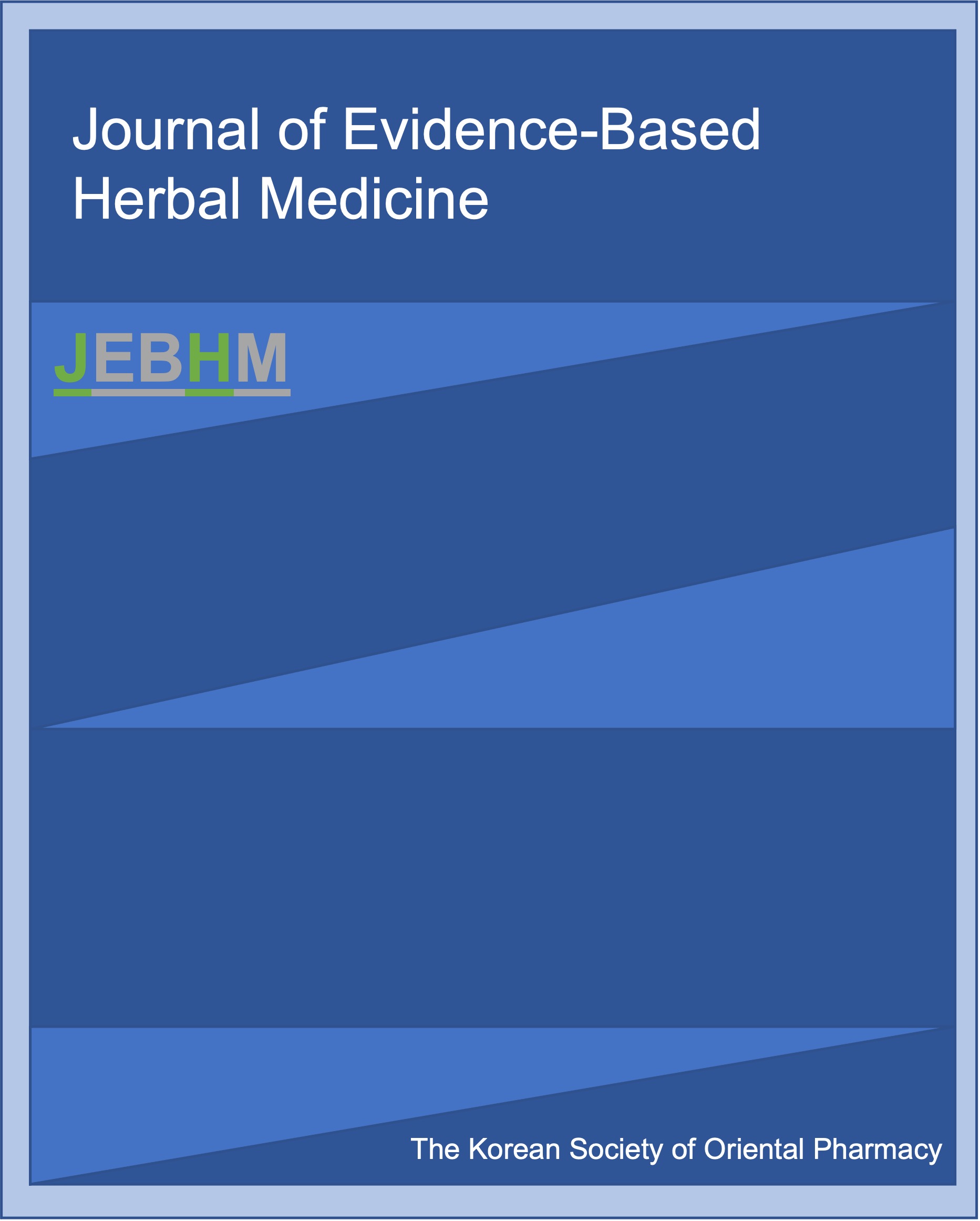3권 1호
초록
Abstract
While herbal medicine including mineral herbal medicine mostly provides microelements to the human body thanks to abundant metallic elements, its harmfulness has been raised due to elements of heavy metals. Harmfulness of mineral herbal medicine needs to be analyzed quantitatively as well as qualitatively so that specificity of herbal medicine including mineral herbal medicine can be reflected. Consequently, the following aims should be set up to mineral herbal medicine, REALGAR, standard processing of REALGAR and the standards of processed drugs should be secured. On the basis of the results of this study, the reasonable measures to develop the processing method and the test method for heavy metals were presented. Such measures are expected to give the following results. First, consumers may take food and medicine without anxiety, and food and medicine may be effectively managed, and the national service may be improved, and also safety against heavy metals may be publicized. Second, as the principal ingredients and microelements of mineral herbal medicine are qualitatively analyzed, such results are expected to contribute to the advance of national analytics for herbal medicine.
초록
Abstract
The use of complementary and alternative medicine (CAM) is currently widespread and appears to be growing. As an increasing proportion of the population turns to CAM therapies, whether singly or in combination with allopathic medicine, the need for quality research in this area is reinforced. Much of this research consists of clinical studies aim ed primarily at clinicians, yet challenges arising from poor methodological quality will occur w hen interpreting study findings and their implications. For clinicians to be effective consumers of the scientific literature, familiarization with the principles of evidence based medicine (EBM) is essential. The goal of this review is to introduce clinicians to the concept of critical appraisal of clinical studies and foster critical thinking when reading research articles in order to best evaluate and incorporate study findings into their daily practice.
초록
Abstract
Gyeongsangbukdo is nation's leading producer of medicinal crop. Based on this, Gyeongbuk-specific measures for the development of oriental medicine industry is proposed. The aim is the development of oriental medicine industry and regional economic in Gyeongbuk. Production, research and development, manufacturing, distribution are constructed in industrial cluster. And each step need a quality control strictly. In production field, make the seed valley of medicinal crop and Good Agricultural Practice park. In research and development field, study on efficacy of oriental medicine with Good Laboratory Practice. In manufacturing field, make industrial park for foods, dietary supplements and drugs with Good Manufacturing Practice. In distribution field, supports advanced distribution program with Good Supply Practice.
초록
Abstract
The aims of this study recognize the limitations of the domestic chocolate market compared to domestic and foreign chocolate market and investigate the strategies for activation of the domestic chocolate culture and development of new chocolate market throughout pointing out the various problems. We analyzed the trends for the food market and confectionery market, main market for chocolate, and also compared domestic and foreign cases for market of chocolate as food or non-food. We sought for solutions and implications for diversification of domestic chocolate market through prospects for the future. Domestic chocolate market is not enough to be competitive compared with overseas market, yet. However, we speculated that domestic chocolate market would gradually develop through fusion with herbal bio-industry as rapid economic development. Besides, we demonstrated a few ways which derive larger development through combination of chocolate market and herbal bio-industry. For these sakes, we suggest that at first, if paradigm which is considered oriental medicinal characters and back innovative and differentiated ideas should be present, the activation of markets of chocolate and herbal bio-industry as well as the diversities of market may be obtained.
초록
Abstract
From the roots of Angelica dahurica Bentham et Hooker (Umbelliferae), three known coumarin derivatives have been isolated and identified as 8-(2-hydroxy-3-methoxy-3-methylbutyloxy) psoralen, 5,8-di(2,3-dihydroxy-3-methylbutyloxy) psoralen, 9-[3-(<TEX>$\beta$</TEX>-D-glucopyranosyloxy)-2-hydroxy-3-methylbutoxy]-7H-furo[3,2-g][1]benzopyran-7-one. This is the first report of the occurrence of these compounds in this plant. These three compounds were tested for activity in septic shock model. Among these compounds, 2 showed relatively strong preventive activity against septic shock.

